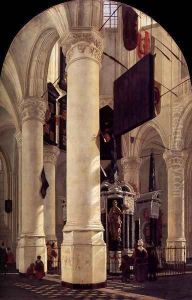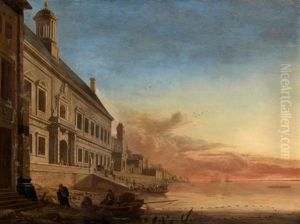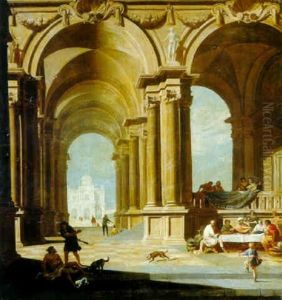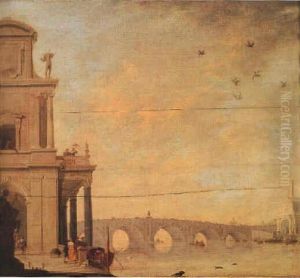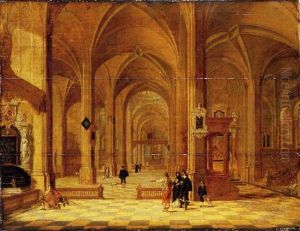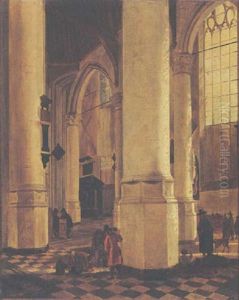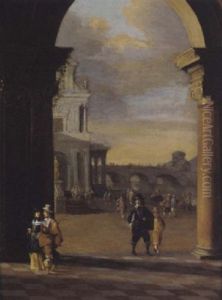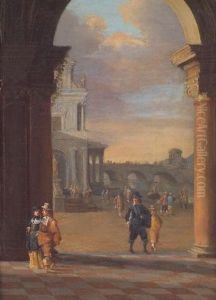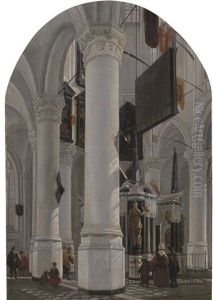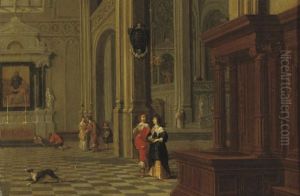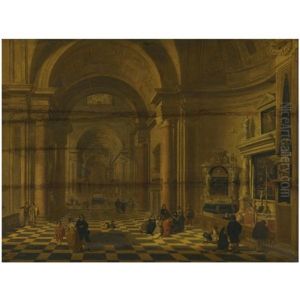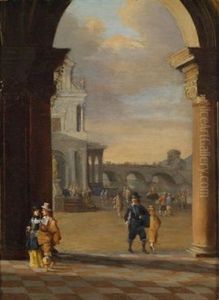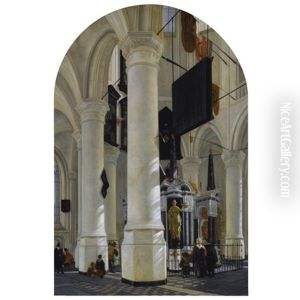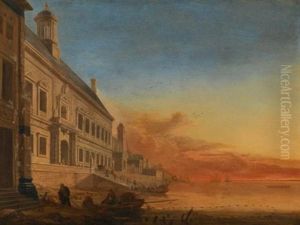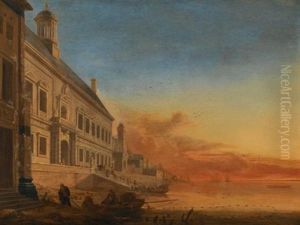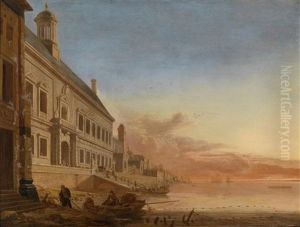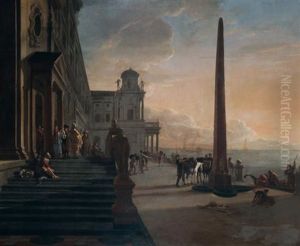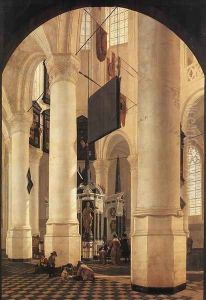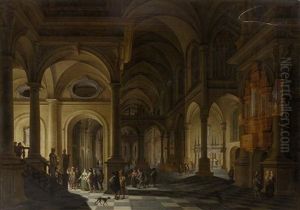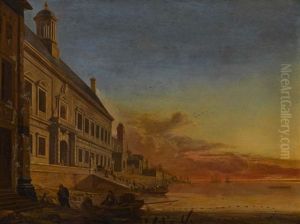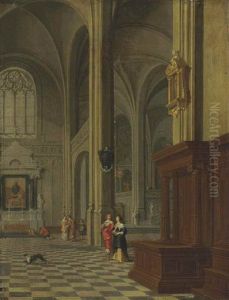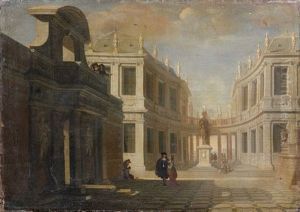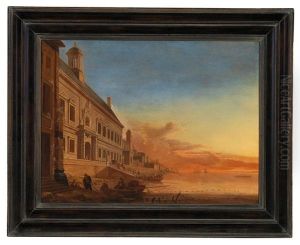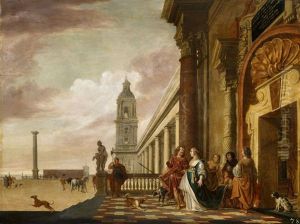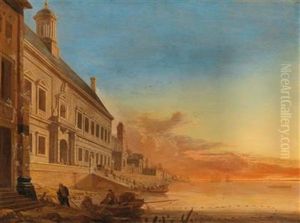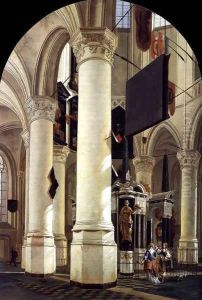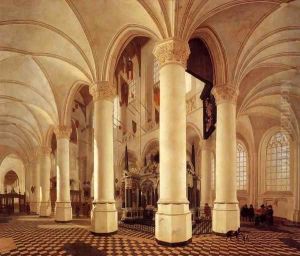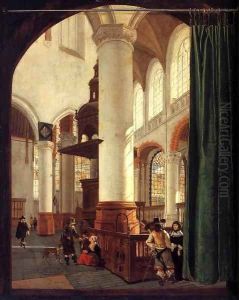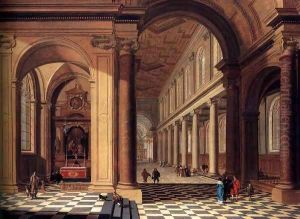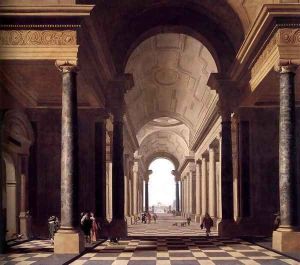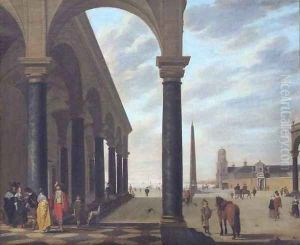Gerard Houckgeest Paintings
Gerard Houckgeest was a Dutch Golden Age painter, renowned for his distinctive contribution to the genre of architectural painting, particularly church interiors. Born in 1600 in The Hague, Netherlands, Houckgeest's early life and training are not well-documented, but it is clear that he emerged as part of a group of artists who specialized in depicting the interiors of churches with a remarkable degree of accuracy and atmospheric detail. This niche genre, which also included figures such as Pieter Saenredam and Emanuel de Witte, focused on capturing the serene and solemn ambiance of church spaces, often emphasizing their architectural beauty and the play of light within these sacred interiors.
Houckgeest's work is distinguished by its meticulous attention to perspective and light, employing techniques that enhanced the depth and realism of his compositions. He was particularly adept at using natural light to illuminate interiors, creating a sense of tranquility and reverence that was characteristic of his style. His paintings often featured the grand churches of the Netherlands, including the Nieuwe Kerk and the Oude Kerk in Delft, cities where he spent significant periods of his career.
In the 1650s, Houckgeest made a notable shift in his work, influenced by his time in the court of Frederick Henry, Prince of Orange, in The Hague. During this period, he began to incorporate more elaborate architectural elements and perspectives, demonstrating an advanced understanding of architectural principles and an ability to manipulate spatial perceptions within his paintings. This evolution in his style contributed significantly to the development of architectural painting in the Netherlands, influencing subsequent generations of artists.
Despite his contributions to Dutch art, Gerard Houckgeest remains less well-known than some of his contemporaries. However, his work is celebrated for its technical skill, its serene and contemplative quality, and its detailed portrayal of architectural beauty. Houckgeest died in 1661, leaving behind a body of work that continues to be studied and admired for its unique perspective on Dutch Golden Age painting and its enduring influence on the depiction of architectural spaces in art.
